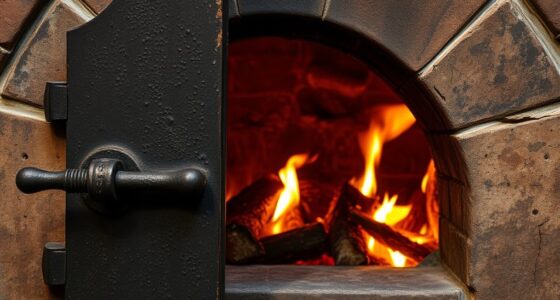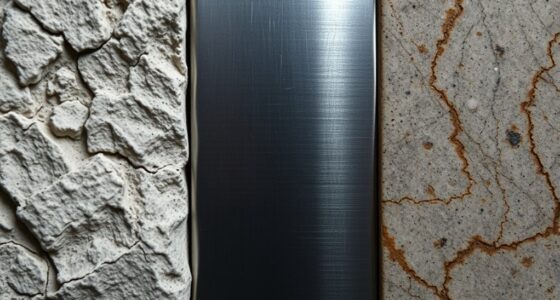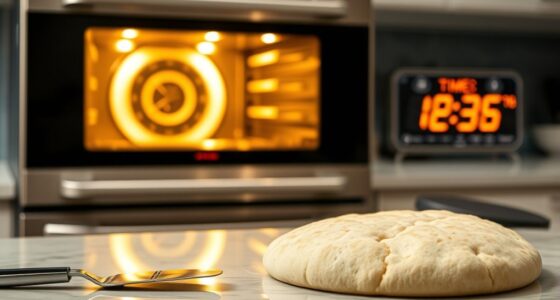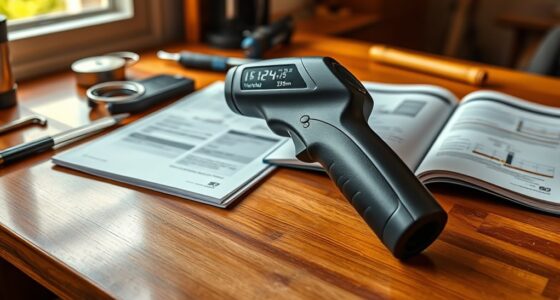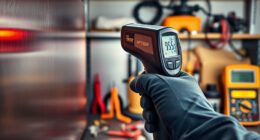To stop guessing with your IR thermometer, learn to use it correctly by holding it perpendicular to surfaces, adjusting emissivity for accurate readings, and avoiding reflective or shiny objects. Regularly calibrate your device against certified sources and keep the lens clean for precision. Don’t forget to store it properly and avoid environmental factors that can skew results. Follow these tips, and you’ll get reliable measurements—keep going to discover more ways to maintain your device for peak performance.
Key Takeaways
- Regularly calibrate your IR thermometer using certified blackbody sources for accurate readings.
- Keep the lens clean with a soft cloth to prevent measurement errors caused by dirt or smudges.
- Adjust emissivity settings based on the surface material to improve measurement precision.
- Store the device in a cool, dry place away from extreme temperatures and moisture.
- Avoid common mistakes like measuring reflective surfaces or unsafe targets to ensure reliable results.
Proper Techniques for Accurate IR Thermometer Readings

To guarantee you get accurate IR thermometer readings, it’s vital to follow proper techniques. First, understand that infrared radiation is emitted by the surface you’re measuring, so ensure the surface is clean and reflective properties are considered. Adjust emissivity settings based on the material, since emissivity impacts how the thermometer interprets infrared radiation. Many IR thermometers allow emissivity adjustments; make sure to set the correct value for the surface to improve accuracy. Always hold the device perpendicular to the target at the recommended distance, and avoid measuring through glass or reflective surfaces that can distort readings. By controlling for infrared radiation and making proper emissivity adjustments, you’ll obtain precise temperature measurements every time. Understanding emissivity is essential for accurate readings, especially when measuring different materials or surfaces.
Regular Calibration and Adjustment Procedures
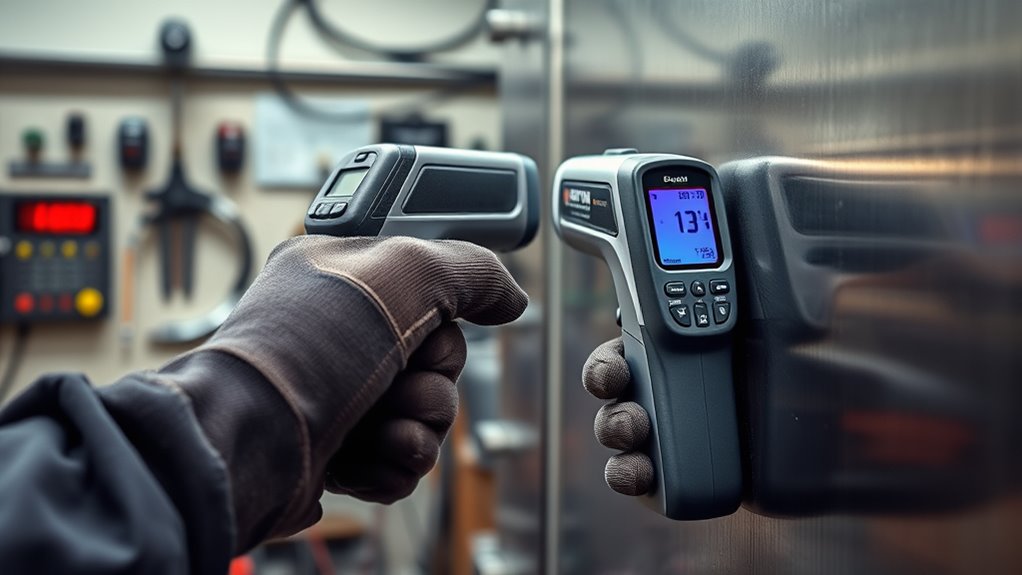
Regular calibration and adjustment are key to maintaining your IR thermometer’s accuracy over time. Establish a calibration schedule based on usage frequency and manufacturer recommendations. Regular checks help guarantee your readings stay reliable. When calibration is needed, follow adjustment methods such as using a certified blackbody calibration source or reference surface. These methods allow you to verify and correct any deviations in your thermometer’s readings. Keep track of calibration dates and results to identify patterns or drift. If discrepancies persist, recalibrate or seek professional servicing. Consistent calibration prevents errors in measurements, ensuring accurate temperature readings for your tasks. Additionally, understanding infrared thermometry principles can help you interpret readings more effectively. By adhering to a regular calibration schedule and applying proper adjustment methods, you protect your investment and improve the overall reliability of your IR thermometer.
Cleaning and Maintaining Your Device

Keeping your IR thermometer clean and well-maintained is essential for ensuring accurate readings and prolonging its lifespan. Regularly wipe the lens with a soft, lint-free cloth to prevent dust and smudges from affecting measurements. Check and replace batteries promptly to avoid leaks that can damage the device and reduce battery lifespan. Proper storage conditions are crucial; keep the thermometer in a cool, dry place away from direct sunlight and extreme temperatures. This prevents deterioration of internal components and preserves battery health. Avoid exposure to moisture or harsh chemicals, which can impair performance. Additionally, understanding device maintenance best practices ensures optimal functionality over time. By maintaining cleanliness and following recommended storage guidelines, you ensure your IR thermometer stays reliable, accurate, and ready for use whenever needed.
Common Mistakes to Avoid During Use
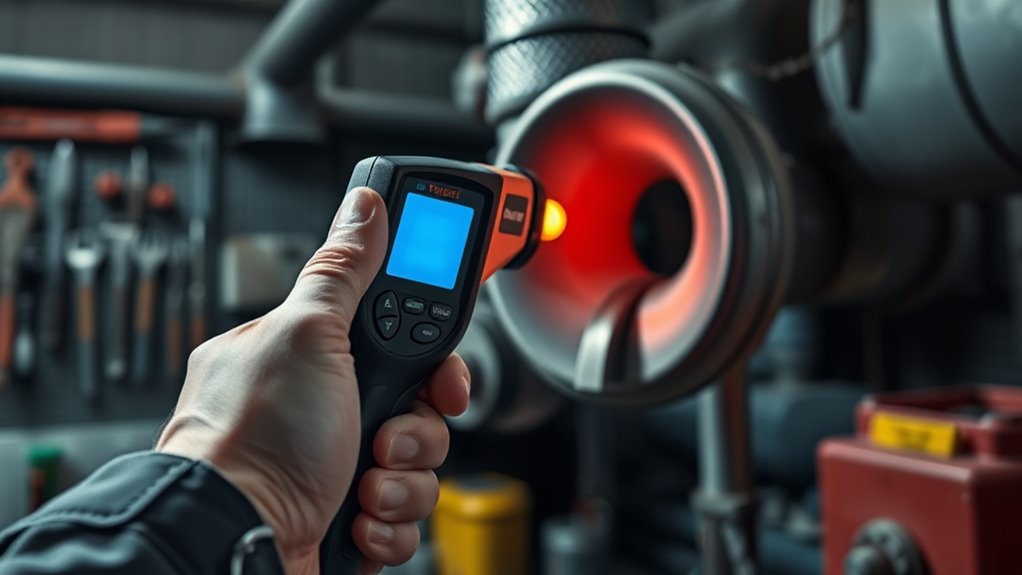
Avoiding common mistakes during use helps guarantee your IR thermometer provides accurate readings and lasts longer. First, never point the device at surfaces with reflective or shiny finishes, as this can cause inaccurate temperature variability. Always maintain proper distance—holding the thermometer too close or too far can skew results. Be mindful of infrared safety; avoid aiming at eyes or skin for prolonged periods. Ensure the device’s lens is clean and free of dirt or smudges to prevent false readings. Lastly, don’t ignore environmental factors like strong sunlight, wind, or steam, which can interfere with accuracy. Proper technique keeps your measurements consistent, prevents damage, and ensures safety through correct infrared use. Additionally, staying aware of technological influence can help users better understand how digital distractions might impact their focus on proper measurement techniques. Avoid these mistakes to get reliable results every time.
When to Replace or Repair Your IR Thermometer
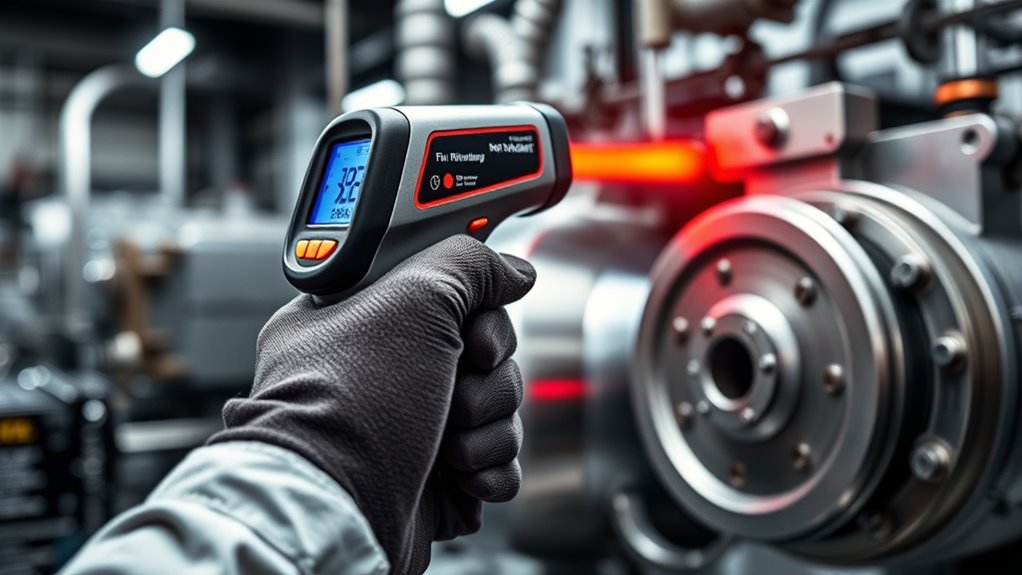
Knowing when to replace or repair your IR thermometer is essential to guarantee accurate readings and safety. If you notice inconsistent results or readings outside expected ranges, it’s time to contemplate repair or replacement. Pay attention to battery life; if the device’s battery drains quickly or won’t hold a charge, replacing the battery may suffice, but persistent issues could mean the whole unit needs replacing. Additionally, check storage conditions—exposing your thermometer to extreme temperatures, humidity, or direct sunlight can damage internal components. Regular calibration can extend lifespan, but if calibration fails or the device becomes unresponsive, replacement is advisable. Use this table for quick guidance: Frictional unemployment can sometimes present new opportunities for growth in certain industries.
| Issue | Likely Cause | Action |
|---|---|---|
| Inconsistent readings | Battery or calibration issues | Repair or replace |
| Device won’t turn on | Battery or internal fault | Replace battery or unit |
| Damage from storage conditions | Physical damage or corrosion | Replace or repair |
Frequently Asked Questions
How Does Ambient Temperature Affect IR Thermometer Accuracy?
Ambient temperature considerably impacts your IR thermometer’s accuracy through ambient influence, which can cause readings to be off if not accounted for. To guarantee precise measurements, you should regularly perform temperature calibration, especially if the device is used in environments with fluctuating temperatures. By understanding and adjusting for ambient influence, you can maintain reliable readings and avoid errors caused by changes in the surrounding environment.
Can IR Thermometers Measure Through Transparent or Reflective Surfaces?
IR thermometers can’t reliably measure through transparent barriers or reflective surfaces. Reflective surfaces, like shiny metals, can reflect infrared radiation away, causing inaccurate readings. Transparent barriers, such as glass or plastic, can also interfere with measurement by absorbing or reflecting IR radiation. To get accurate results, avoid pointing your IR thermometer at reflective surfaces or transparent barriers, and ensure the target surface is appropriate for infrared measurement.
What Is the Ideal Storage Temperature for an IR Thermometer?
Like a trusty steed in a time before GPS, your IR thermometer needs proper care. Store it between 14°F and 122°F (–10°C and 50°C) in a dry, stable environment. Maintain good storage conditions to prevent damage and guarantee accurate readings. Check calibration frequency regularly, ideally every year or after rough handling, so your device stays reliable and precise in all your measurements.
Are There Specific Environments Where IR Thermometers Should Not Be Used?
You should avoid using IR thermometers in environments with high humidity, dust, or extreme temperatures, as these conditions can influence accuracy. In industrial safety, such environments may pose risks, while in medical applications, contamination or moisture can lead to unreliable readings. Always consider environmental factors to guarantee precise measurements. Use IR thermometers in suitable settings to maintain safety standards and achieve accurate results.
How Long Does a Typical Calibration Process Take?
Calibration typically takes about 15 to 30 minutes, depending on the device’s complexity. Regular calibration frequency, often every 6 to 12 months, ensures your IR thermometer maintains accuracy. During calibration, you verify the device’s readings through accuracy verification procedures, which help identify any discrepancies. This process guarantees precise measurements, reducing guesswork, and extending your thermometer’s lifespan. Staying consistent with calibration keeps your readings reliable and your maintenance routine effective.
Conclusion
By following these tips, you’ll guarantee your IR thermometer stays accurate and reliable, like a trusted compass guiding you through precise measurements. Regular calibration, proper cleaning, and avoiding common mistakes keep your device in top shape. Think of it as tending a delicate plant—you must nurture and maintain it consistently. With these practices, you’ll confidently get the right readings every time, making your work more efficient and stress-free.


